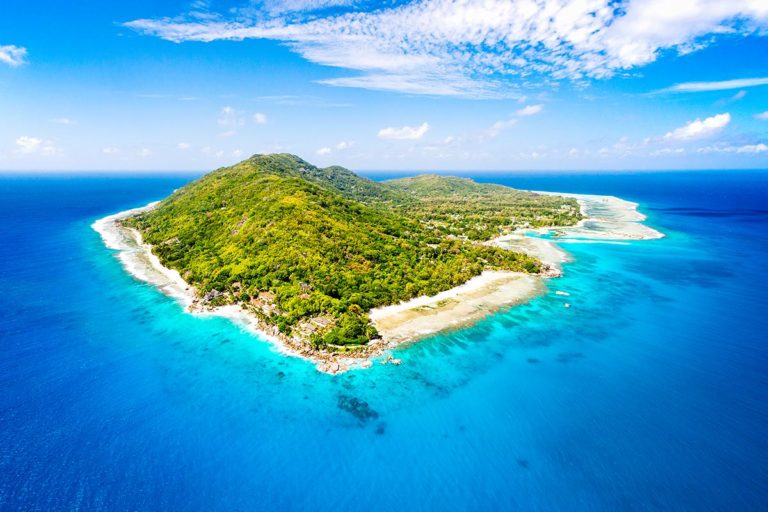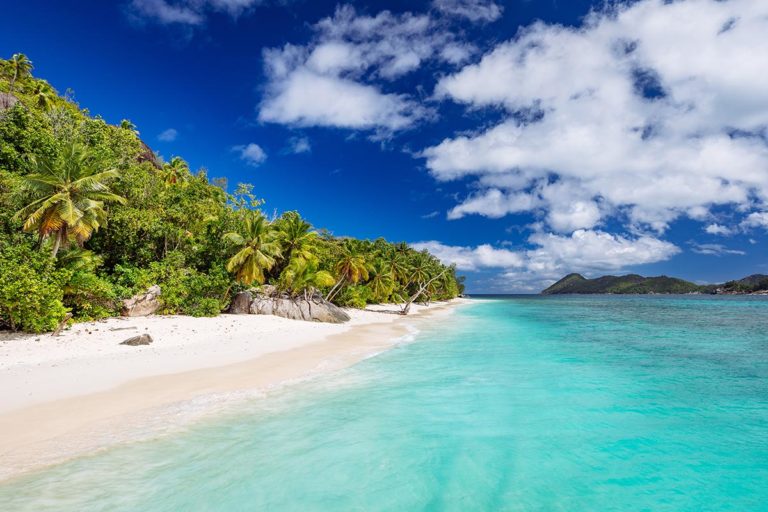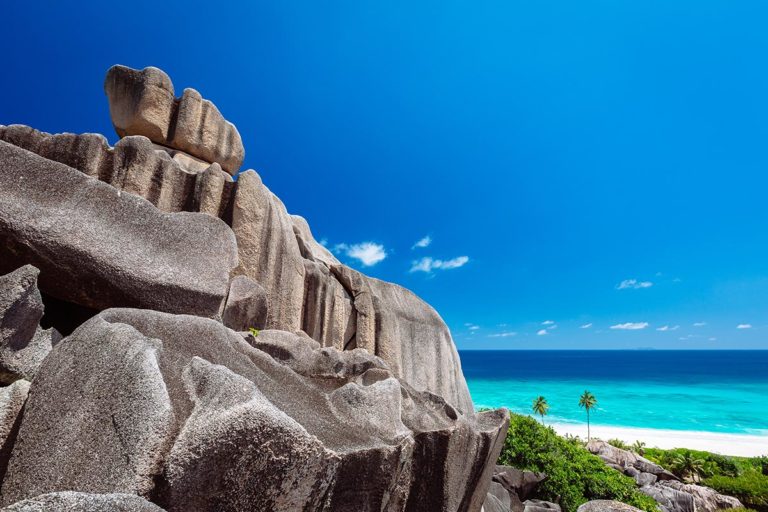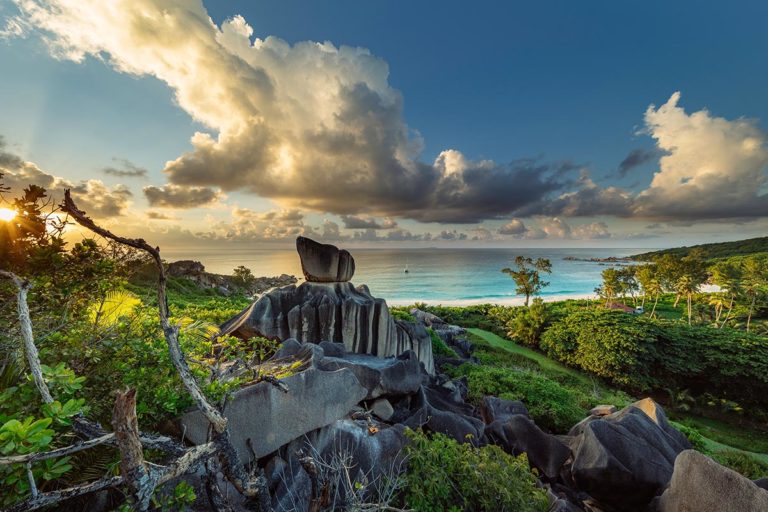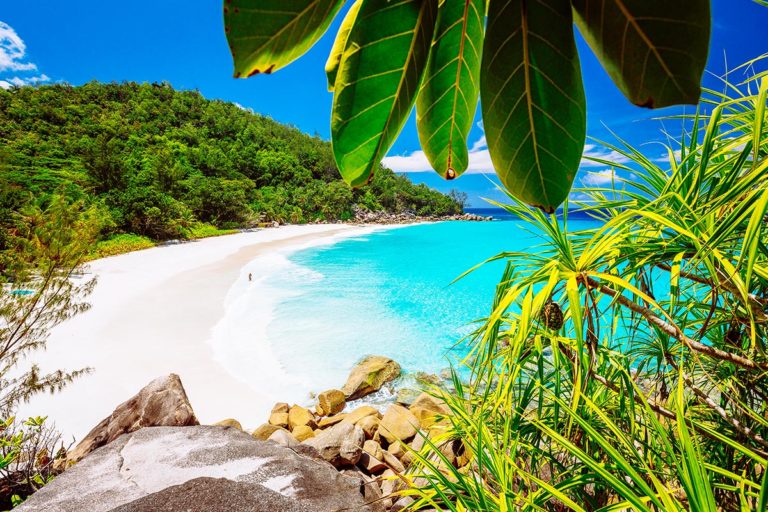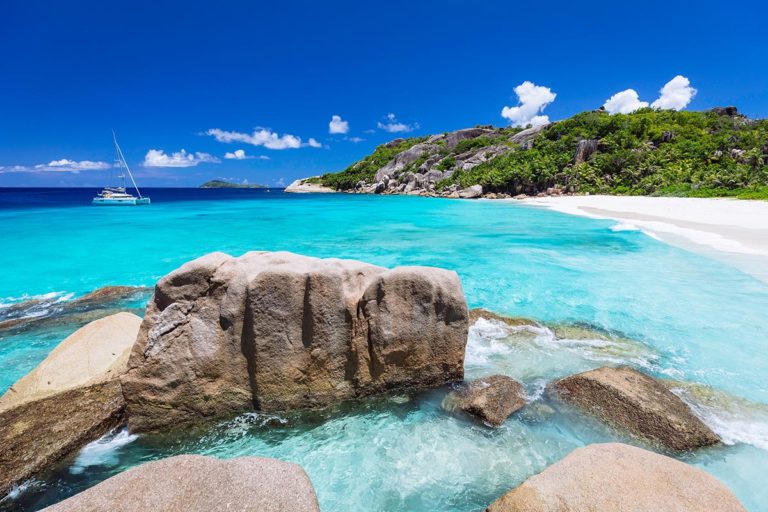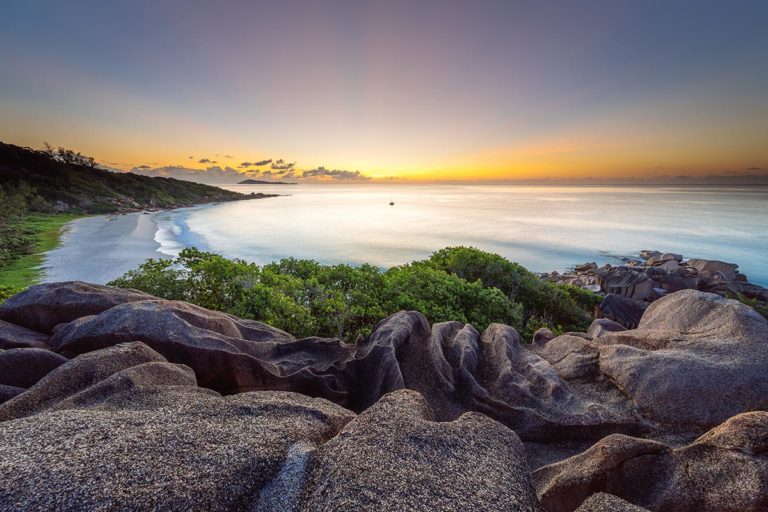Getting married in the Seychelles
Yes, I do!
You are currently viewing a placeholder content from YouTube. To access the actual content, click the button below. Please note that doing so will share data with third-party providers.
More InformationThe photographer from television
Getting married in the Seychelles
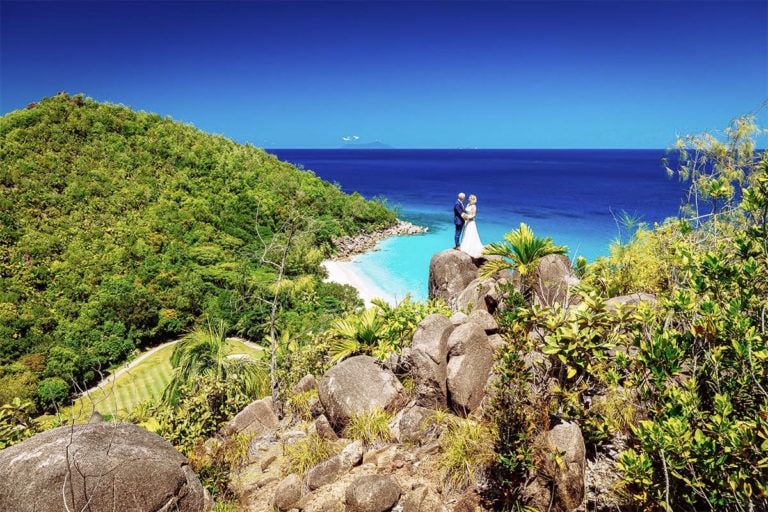
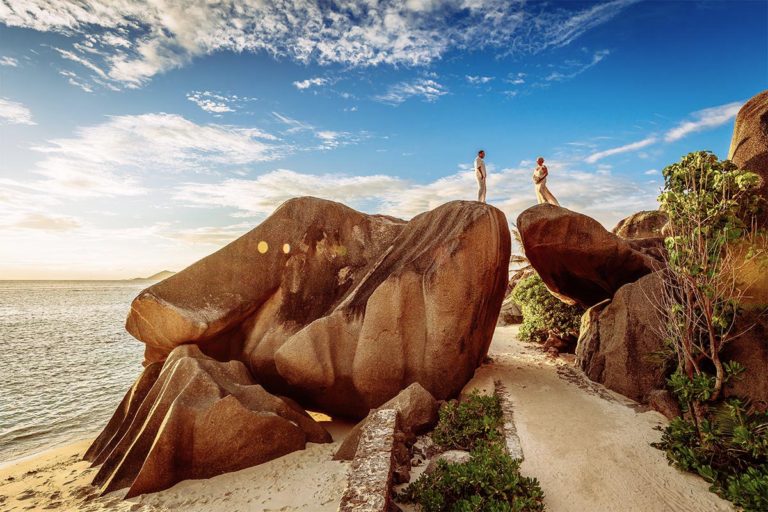




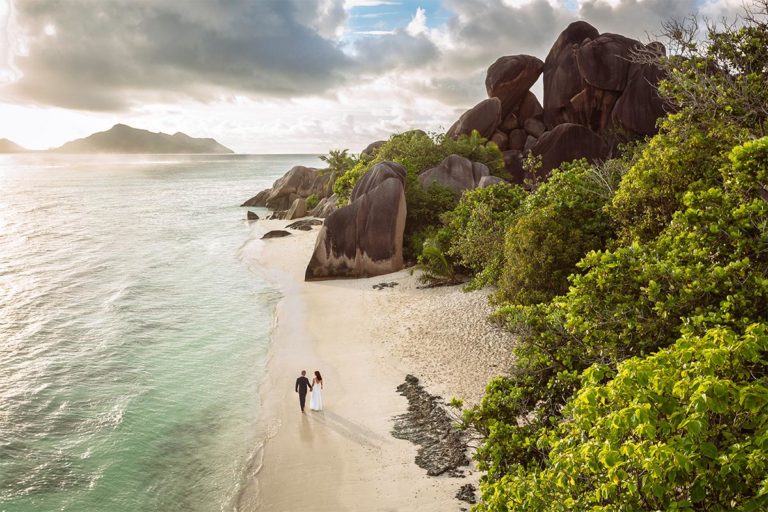

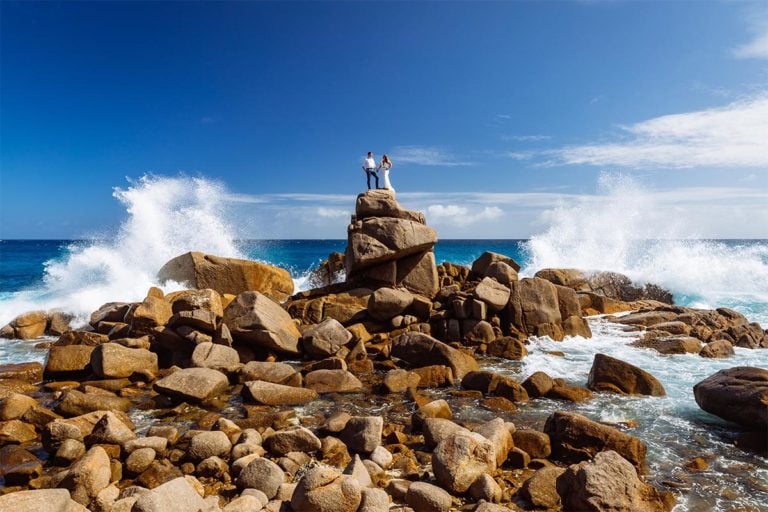



And of course someone has to capture this great day in timelessly beautiful wedding pictures. Someone who has worked as a wedding photographer in the Seychelles over 250 times. He knows the islands like no other and is now probably the most experienced “travel and wedding consultant” for the Seychelles in the German-speaking world.
Someone who speaks your native language, is happy to act as an interpreter if necessary and will answer all the big and small questions you are sure to ask yourself long before your big trip. Some examples:
“Who will take care of my hair and make-up before the wedding? Which hotel is the best choice for our budget? Which beach is the most beautiful for our wedding? And how do we get from the hotel to our wedding location and back again later? On which beach do we have no spectators? What time is ideal? Are there any disadvantages to getting married in the afternoon? And who will actually take care of my bridal hairstyle?” Or also:
“A delicious wedding dinner under the stars with your feet in the sand would be a great end to our wedding day – but who can organize this for us cheaply and reliably?” (Note: Some agencies in the Seychelles will charge you over 300 euros for such a candlelight dinner! I would be happy to organize it for you at a quarter of the price. Food, decoration and everything else – apart from alcoholic drinks – included!) Which papers/documents do we need? Where can we see giant tortoises running free in the wild? Which restaurants are recommended? Is there anything tasty for vegetarians/vegans? Which takeaway restaurant is also open on Sundays? Or fundamental questions such as:
“Where is the best place to change our money? When do the stores close? How do we travel back and forth between the islands? Where can we get chicken nuggets or burgers for the children?” and many other questions. I know the answers to all the questions you are asking – because I am currently in the Seychelles for the 47th time (as of November 2023) and have already helped more than 250 couples to realize their very personal, absolute dream wedding in the Seychelles.
I am not only your travel consultant and wedding consultant, but also your wedding photographer in the Seychelles! Each of the aforementioned > 250 couples was photographed by me personally. I have been a freelance photographer in Germany since 2005 (in the Seychelles since 2009) and am regarded as THE wedding photographer for the Seychelles – but travel advice and answering the typical questions about a Seychelles wedding are just as much fun for me and now take up most of my time with the many couples who book me. There’s hardly a day of the year when I don’t speak to one of “my” Seychelles couples on the phone or chat with them via WhatsApp or email. So you’re not only booking an experienced photographer, but also the “professional for everything” for your Seychelles trip.
Since I ideally photograph with you in the Seychelles on two or even three consecutive days, you will get lots of beautiful pictures afterwards to show those back home how wonderful your wedding in the Seychelles was! Pictures in which you will look incredibly good – because I show you in the pictures exactly as you are! No contrived poses, no kneeling in front of the bride – just the two of you. You two just the way you are!
I will be happy to put you in direct contact with the registrar well in advance of your dream wedding. You then send this nice lady copies (scans) of your required documents by WhatsApp or by e-mail. You agree the wedding date and the desired time with her. By the way, the time is very important! I will of course be happy to advise you in advance. And of course I will also be happy to take over the communication with the registrar if you prefer!
We will then discuss the organization of the actual ceremony and the decorations, the flowers you want, the wedding cake, champagne or coconut cocktail etc. directly with the best wedding planner and decorator in the Seychelles in my opinion, without the costly detour via a “wedding agency”! He lives on the “wedding island” of La Digue. “Wedding island”, because almost all couples understandably want to get married on La Digue! The wedding ceremony on La Digue can now even be held in German! At least parts of the wedding ceremony. As far as I know, the registrar of La Digue, who took up her duties on 01.01.2024, is the only one in the Seychelles who speaks German! I would also be happy to help you get married on an island other than La Digue! But you should bear this in mind:
La Digue has the most photogenic beaches and the most spectacular rock formations. What’s more, La Digue receives less than a third of the rainfall of the mountainous main island of Mahé! While it is almost always raining somewhere on Mahé, La Digue usually stays dry. When the weather is fine, I often look over from La Digue to Mahé and marvel at the fact that parts of the main island are covered in dark rain clouds, while you can look over La Digue into the mostly blue sky. Well over 90% of all advertising photos taken in the Seychelles were taken on La Digue for a reason.
Another big advantage: You can wait up to five days at many wedding agencies for the apostille – the document that confirms your marriage in the Seychelles and enables you to have the wedding legally registered at the registry office in your home country. However, if you get married with my help on La Digue, you will receive your apostille on the working day after the marriage! Example: You get married on a Thursday = handing over the apostille in person at your accommodation on Friday. But back to your ceremony:
The look of the decoration is of course up to you. With my help you will experience your very own dream wedding in the Seychelles! There are almost countless decoration options, which you can of course view on site beforehand. “Oh what – only on site? Just a few days before our wedding? But is that enough?” Yes, absolutely! Please let go of everything you know about the stress of preparing for a wedding in Europe. Trust me! Please remember:
The wedding cake is baked within a few hours. The flowers and blossoms available for both the bridal bouquet and the decoration (e.g. frangipani, hibiscus or orchids) grow on the island all year round and are only freshly cut or picked shortly before your wedding ceremony! The champagne is always cold anyway and a coconut cocktail is ready to serve within seconds. It is also sufficient for the hairdresser/visagist to be informed 2-3 days before your wedding whether you would like to make use of her services. Of course you decide at what time the lady should come to your hotel or guesthouse! Yes, this is also possible at 05:00 in the morning if you want to get married early in the morning.
I now spend around five months of the year working as a wedding photographer in the Seychelles, organizing the “most beautiful trip of a lifetime” for discerning bridal couples and capturing it in timelessly beautiful photographs. After 48 trips to the dream islands (as of April 2024), I have gained a lot of experience on the subject of “getting married in the Seychelles” and know almost every square meter on the four main islands Mahé, Silhouette, Praslin and La Digue as well as on the high-end luxury island Frégate Island Private and many other islands such as Denis Island, Bird Island or Félicité.
The beaches of La Digue, Mahe, Praslin, Frégate Island Private, Denis Island, Bird Island and partly also of Silhouette and Félicité offer the perfect backdrop for great wedding pictures of the Seychelles! Most couples who get married on the beach there then add a few days or even weeks of vacation and spend their honeymoon in the Seychelles. I usually accompany “my” couples on the day after the wedding ceremony and sometimes even the day after that, in order to create as many great wedding pictures as possible at different locations. Speaking of “lots of great wedding pictures”:
If you would like to see many more of my wedding pictures from the Seychelles, please check out my Instagram account. I usually post new pictures there several times a week. You can find the link to my Instagram account a little further down on this page.
One more thing is very important to me: ALL the photos you see here on my pages were taken by me, without exception. Actually a matter of course. But now that I have discovered the website of another photographer here in the Seychelles, who shows photos of wedding couples that were purchased from photo agencies, it is particularly important for me to emphasize: Every single photo on my pages was taken by me personally. All couples are “real” couples, i.e. not photo models or similar. On my pages you will only see couples who are also a couple in real life.
To everyone who has made it this far: Thank you for your attention! 🙂
Discover paradise
